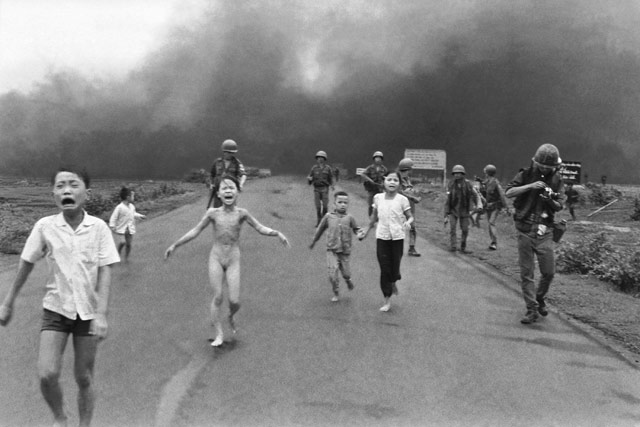Forty years ago this month, one of the most memorable images during the Vietnam War was taken. Kim Phuc, the 9 year old girl in the photo, was running from her village that was hit by napalm.
Everyone has seen that picture, but I didn’t know video footage also exists. Warning: the footage is graphic.
Nick Ut, the AP photographer who took the image above, describes the day in 1972:
Behind Kim, you see all the South Vietnamese armies running with her, together. And next to Kim, her older brother and one young brother looking back to the black smoke, and another two [members of] her family. She looked ever so bad – I thought that she would die.
At first, the news agency rejected the photo due to its policy against nudity, but photo editor Horst Faas recognized it’s value and ensured it’s publication. Horst Faas, who passed away last month, was instrumental in sending out 2 of the most famous images from the Vietnam War: the one above and the one called Saigon Execution.
Most people know the images, but not much of the stories of the people behind it. As much as I love taking pictures, I love learning about people and their stories. And Kim Phuc, the girl in the photo above, has a pretty crazy story:
After multiple skin grafts and surgeries, Phuc was finally allowed to leave, 13 months after the bombing. She had seen Ut’s photo, which by then had won the Pulitzer Prize, but she was still unaware of its reach and power.
She worked hard and was accepted into medical school to pursue her dream of becoming a doctor. But all that ended once the new communist leaders realized the propaganda value of the “napalm girl” in the photo.
“I wanted to escape that picture,” she said. “I got burned by napalm, and I became a victim of war … but growing up then, I became another kind of victim.”
She turned to Cao Dai, her Vietnamese religion, for answers. But they didn’t come. One day, while visiting a library, Phuc found a Bible. For the first time, she started believing her life had a plan.
A book was written in 1999 and a documentary came out, at last the way she wanted it told. She was asked to become a U.N. Goodwill Ambassador to help victims of war. She and Ut have since reunited many times to tell their story, even traveling to London to meet the Queen.
After four decades, Phuc, now a mother of two sons, can finally look at the picture of herself running naked and understand why it remains so powerful. It had saved her, tested her and ultimately freed her.

